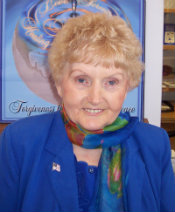Summary | Excerpt | Reading Guide | Reviews | Beyond the Book | Read-Alikes | Genres & Themes | Author Bio

This article relates to Mischling
 The twins in Mischling are loosely based on Romanian sisters Eva and Miriam Mozes, survivors of "Angel of Death" Josef Mengele's sadistic experiments at Auschwitz. Having studied twins in a legitimate capacity earlier in his career, Mengele took advantage of his position as a doctor at Auschwitz to perform unwarranted operations, mutilations, deadly blood transfusions, and other atrocities on the hundreds of sets of twins forced into the labor camp. Mengele reportedly injected his subjects' eyes with chemicals in an attempt to change their color (Stasha suffers this treatment in Mischling) and if one twin died the other was swiftly murdered so Mengele could perform a comparative post-mortem (or, as likely in many cases, because a single twin was of no further value to his experiments.)
The twins in Mischling are loosely based on Romanian sisters Eva and Miriam Mozes, survivors of "Angel of Death" Josef Mengele's sadistic experiments at Auschwitz. Having studied twins in a legitimate capacity earlier in his career, Mengele took advantage of his position as a doctor at Auschwitz to perform unwarranted operations, mutilations, deadly blood transfusions, and other atrocities on the hundreds of sets of twins forced into the labor camp. Mengele reportedly injected his subjects' eyes with chemicals in an attempt to change their color (Stasha suffers this treatment in Mischling) and if one twin died the other was swiftly murdered so Mengele could perform a comparative post-mortem (or, as likely in many cases, because a single twin was of no further value to his experiments.)
Eva and Miriam were ten years old when they arrived at Auschwitz. Eva recalls their experience on the separation platform:
When the doors to our cattle car opened, I heard SS soldiers yelling, 'Schnell! Schnell' and ordering everybody out. My mother grabbed Miriam and me by the hand...Everything was moving very fast...my father and my two older sisters were gone...an SS man hurried by shouting, 'Twins! Twins!' He stopped to look at us...'Are they twins?' he asked my mother. 'Is that good?' she replied. He nodded yes. 'They are twins,' she said.
Upon this appraisal, they were swiftly taken to Mengele's children's barracks where corpses littered the ground. While Mengele was cruel and capricious, being twins may have kept Eva and Miriam alive, as his subjects were permitted extra rations and were kept in isolation from the SS guards.
When the camp was freed by the Soviets in 1945, Eva and Miriam were featured in a film made of the survivors wearing striped prison garb. The girls returned to their Romanian village hoping to be reunited with family, but they were the sole survivors of their immediate family. They went to live with their aunt, also a survivor, until 1950 when, aged 16, they received permission to emigrate to Israel where they both attended agricultural school for two years. Then they joined the Israeli army, where Miriam became a lieutenant and a registered nurse and Eva reached the rank of sergeant major as a draftsman. Later Eva met Michael Kor, an American tourist (also a concentration camp survivor) and moved to the USA with him. She has lived in Indiana ever since.
In 1984 Eva and Miriam founded CANDLES (Children of Auschwitz Nazi Deadly Lab Experiments Survivors) and tracked down many twin survivors of Mengele's experiments. In 1985, they organized a conference attended by 122 Mengele Twins in Jerusalem. According to the organization's website, CANDLES "honors and celebrates the lives of the estimated 3,000 twins who were victims of Dr. Josef Mengele's deadly genetic experiments."
 Miriam's kidneys were severely underdeveloped due to something that she had been injected with in Auschwitz. Eva donated one of her kidneys but unfortunately Miriam developed cancerous polyps after the transplant and died in Israel in 1993.
Miriam's kidneys were severely underdeveloped due to something that she had been injected with in Auschwitz. Eva donated one of her kidneys but unfortunately Miriam developed cancerous polyps after the transplant and died in Israel in 1993.
Eva has written books including Surviving the Angel of Death, and Echoes from Auschwitz (both written as Eva Mozes Kor), and given lectures around the world about her experiences at Auschwitz. She has chosen to forgive Mengele and her other captors, a decision that she says ultimately brought her true liberation: "I was free of Auschwitz, and I was free of Mengele."
Immediately following the war, Josef Mengele moved to Bavaria, where he worked on a farm, and then to South America where he lived on the lam for many years. West Germany issued a warrant for his arrest in 1959, but he was never apprehended. He died in Brazil in 1979, drowning in the ocean after suffering a massive stroke.
Picture of Eva and Miriam Mozes from Quora.com
Picture of Eva Mozes from CANDLES Holocaust Museum and Education Center
Filed under People, Eras & Events
![]() This "beyond the book article" relates to Mischling. It originally ran in September 2016 and has been updated for the
May 2017 paperback edition.
Go to magazine.
This "beyond the book article" relates to Mischling. It originally ran in September 2016 and has been updated for the
May 2017 paperback edition.
Go to magazine.
Your guide toexceptional books
BookBrowse seeks out and recommends the best in contemporary fiction and nonfiction—books that not only engage and entertain but also deepen our understanding of ourselves and the world around us.